Valleyview, Cascade Mountain in Banff
Sept 23, 2024
Parking:
On Lake Minnewanka Scenic Drive, there’s a pull-out just after the creek and a
closed gravel road with a gate.
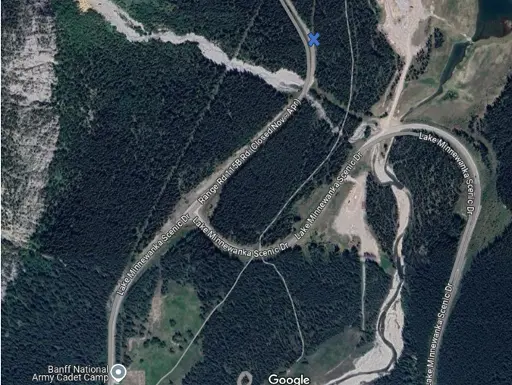
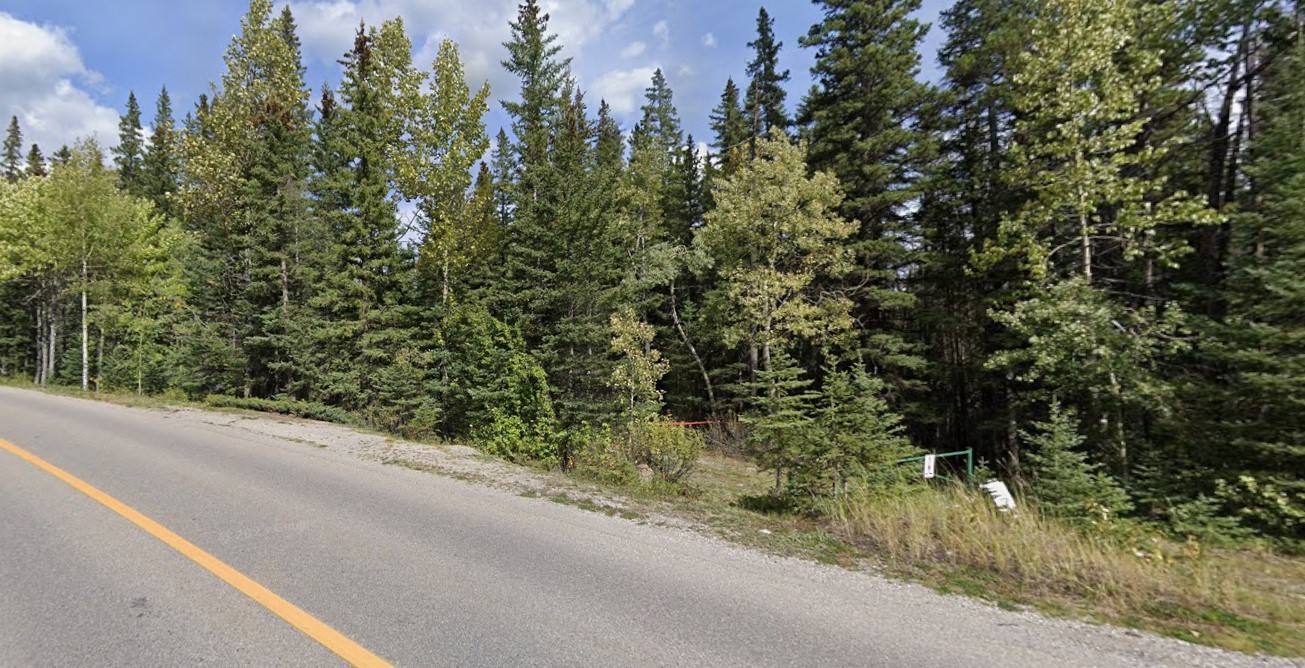
Approach:
The easiest way to approach is by walking through the creek. As you near the waterfall, a trail emerges, guiding you through the forest. Resist the urge to stay close to the cliff — it may seem more direct, but trust me, it’s far more efficient and less exhausting to follow the forest path. My climbing partner, Saskia, and I had no idea about this, and we ended up scrambling across loose rock, doing an unnecessary traverse just to reach the base. Once you exit the forest, a short scramble brings you to the start of the climb.
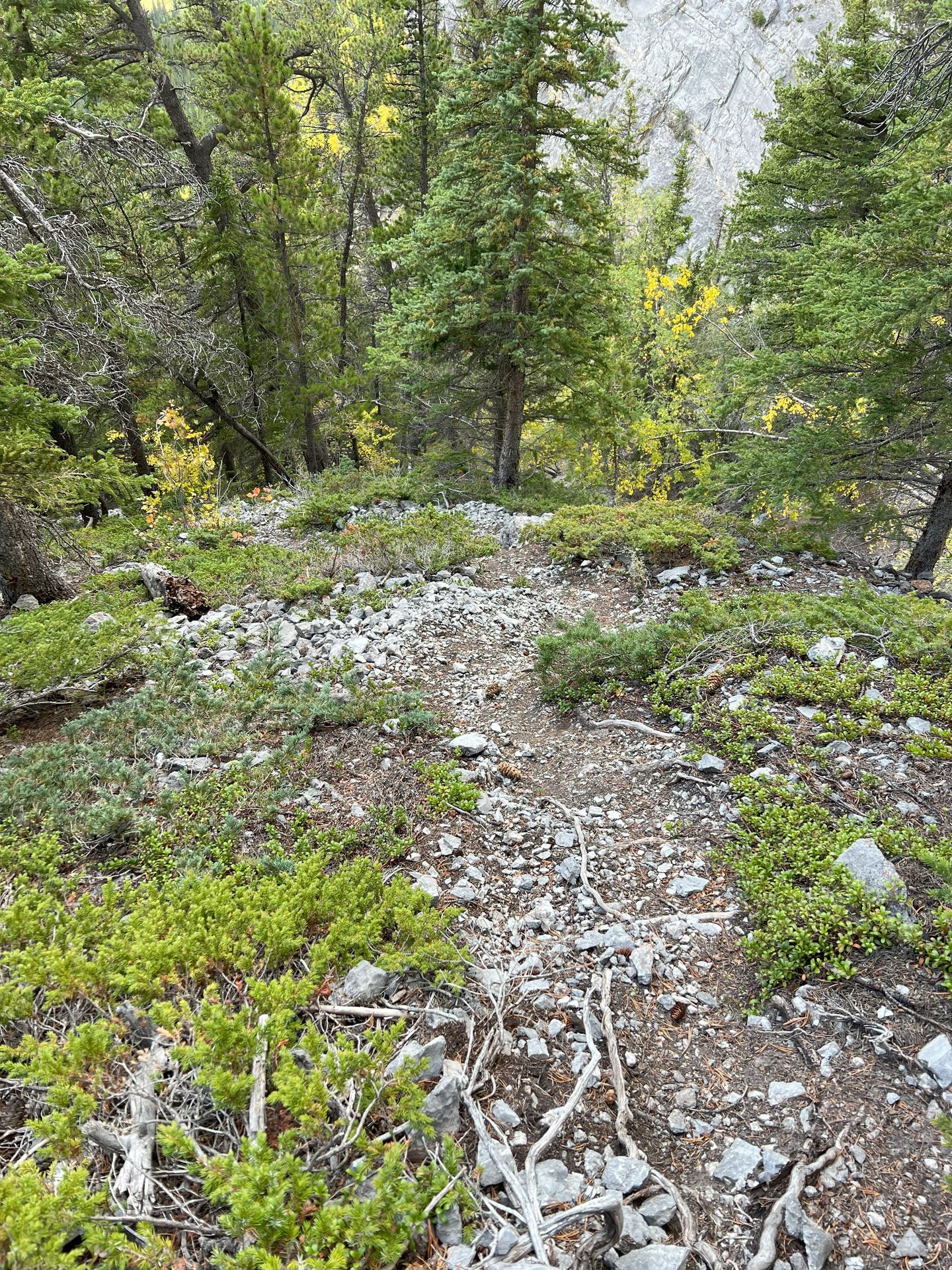

Trail in the forest Scramble part to reach the first pitch
Route:
I remember the first time I drove toward Lake Minnewanka, Cascade Mountain immediately caught my eye. Its towering presence took my breath away, and I soon found myself researching routes to climb it. That’s how I discovered Valleyview, a moderate, multi-pitch sport climb with fantastic views of the Banff Valley and Lake Minnewanka. True to its name, the view from the top is well worth the effort.
This route took us about 6 hours from car to car. The hardest pitches are well-bolted and all the anchors are equipped with rappel rings, meaning you can bail at any point if needed. Finding the start of the climb took us the most time because we initially missed the forest trail, but I hope this guide helps you avoid that mistake.
Saskia hadn’t climbed in a while, so pitches 4 and 6 felt a bit committing for her to lead. Still, she took her time, figured out the beta, and successfully managed the tough moves.
Pitch Breakdown:
First pitch
Pull out
Gate
First Pitch (5.6):
I led the first pitch, unaware there was an intermediate anchor, so we broke it into two sections. It was straightforward, with some slab moves, but nothing too challenging. Saskia was surprised by the difficulty but managed to follow with ease. She led the second half, though she was a little nervous about the bolt spacing, she climbed through without resting.

Saskia at the second anchor of the first pitch
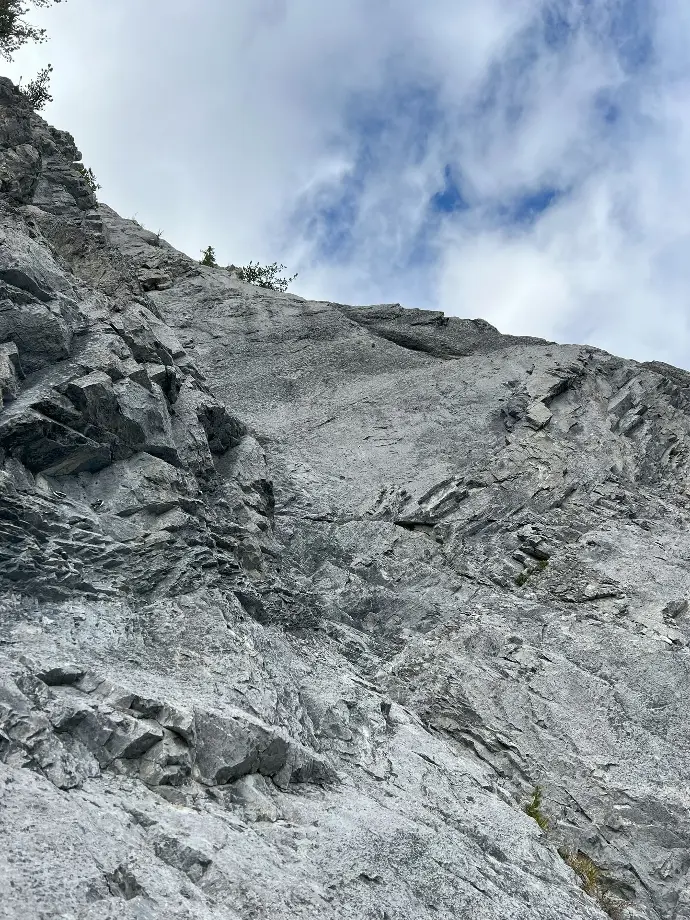
Second Pitch (5.9):
Important note: stick to the left here. On the right, there’s a newer multi-pitch route called The Lost, which is a 5.10c.
I had a blast on this pitch. The holds were obvious and solid, making for enjoyable climbing. The crux was on a slightly overhanging wall, but I found a great three-finger hold for my left hand that gave me the momentum to reach a solid jug. I’m 1.64 meters tall, so I had to throw in a bit of dynamism. Saskia struggled to find that left-hand hold, but once she did, she completed the move effortlessly.
Third Pitch (5.8):
There are two options here: a left traverse (an easier variation) or the original route, which heads straight up. Saskia led this one, and it was a real mental game. Lots of slab moves with bad feet, which made it scary to lead. You had to trust in smears before finally reaching some good holds.

Saskia taking a break on the third pitch
Fourth Pitch (5.9):
This was the real crux of the climb. Midway through, you encounter a slab move on a vertical wall with almost no handholds and barely any footholds. I spent a good bit of time figuring it out. The tension in my legs built as I committed to the move, feeling my feet start to slip as I reached for the next bolt. Thankfully, I managed to clip in just in time, and the relief was overwhelming. After that, there’s another physical move on a slightly polished flat hold, but good footwork makes it manageable. I only committed to this move because the pitch was well-bolted, but if you want a more relaxed experience, the easier variation on the previous pitch might be a better choice.
Fifth Pitch (5.8):
Nothing too tricky here, just a few slabby moves to start.
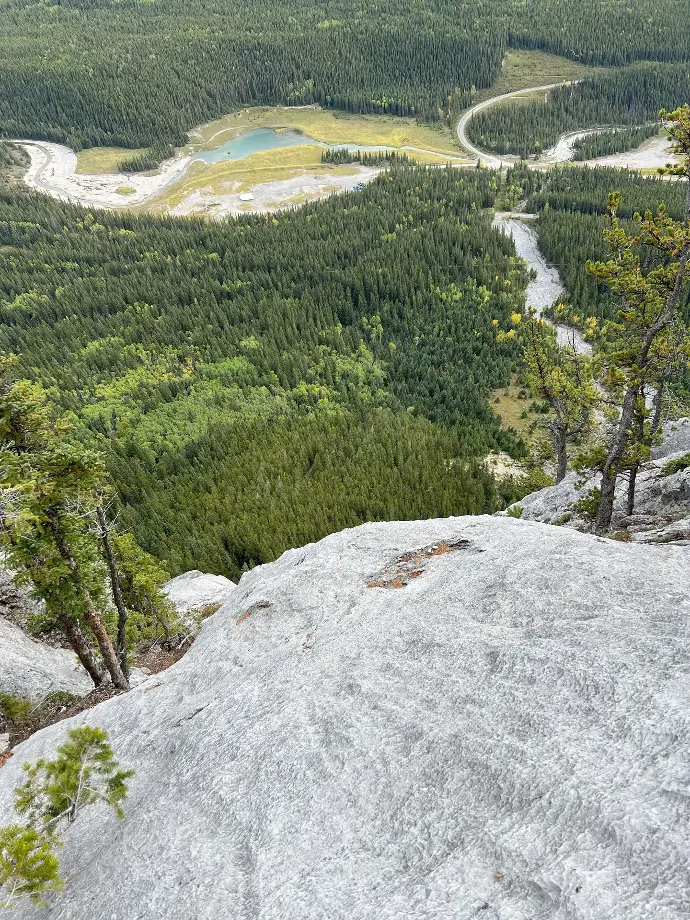
Sixth Pitch (5.6):
For me, this was the scariest pitch to lead. There are only three bolts, and the second is spaced about 6 meters from the first. Even though the climbing was relatively easy, it was still slab, so trusting my feet was crucial—something that’s not exactly my strength.
Picture taken from the top of pitch 6
Seventh Pitch (5.7):
This pitch is pretty chill. It's well bolted and with good holds.
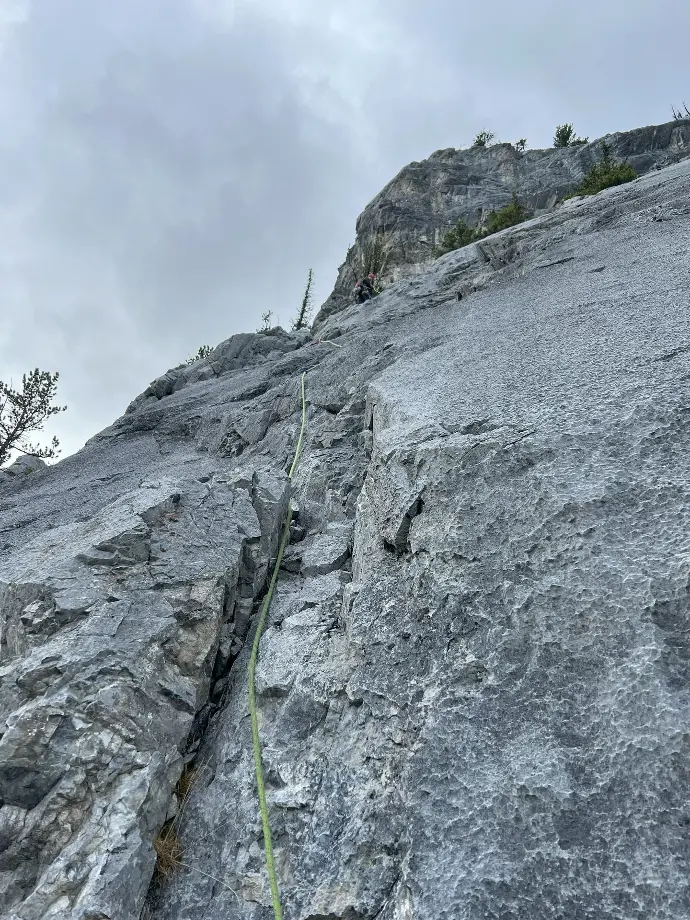
Saskia at the last anchor
Descent:
We rappelled down pitch by pitch using a 80m rope. If you use the intermediate anchor on the first pitch, you can avoid a bit of scrambling on the way down. Once you finish the rappels, you’ll reconnect with the forest trail.
Looking back, Valleyview wasn’t just another check off my climbing list. It was a humbling reminder that some of the toughest challenges in climbing are mental. The fear of slipping and the panic that comes when you feel exposed can make even the easiest moves feel impossible. But pushing through those moments of doubt is what makes the summit that much sweeter.